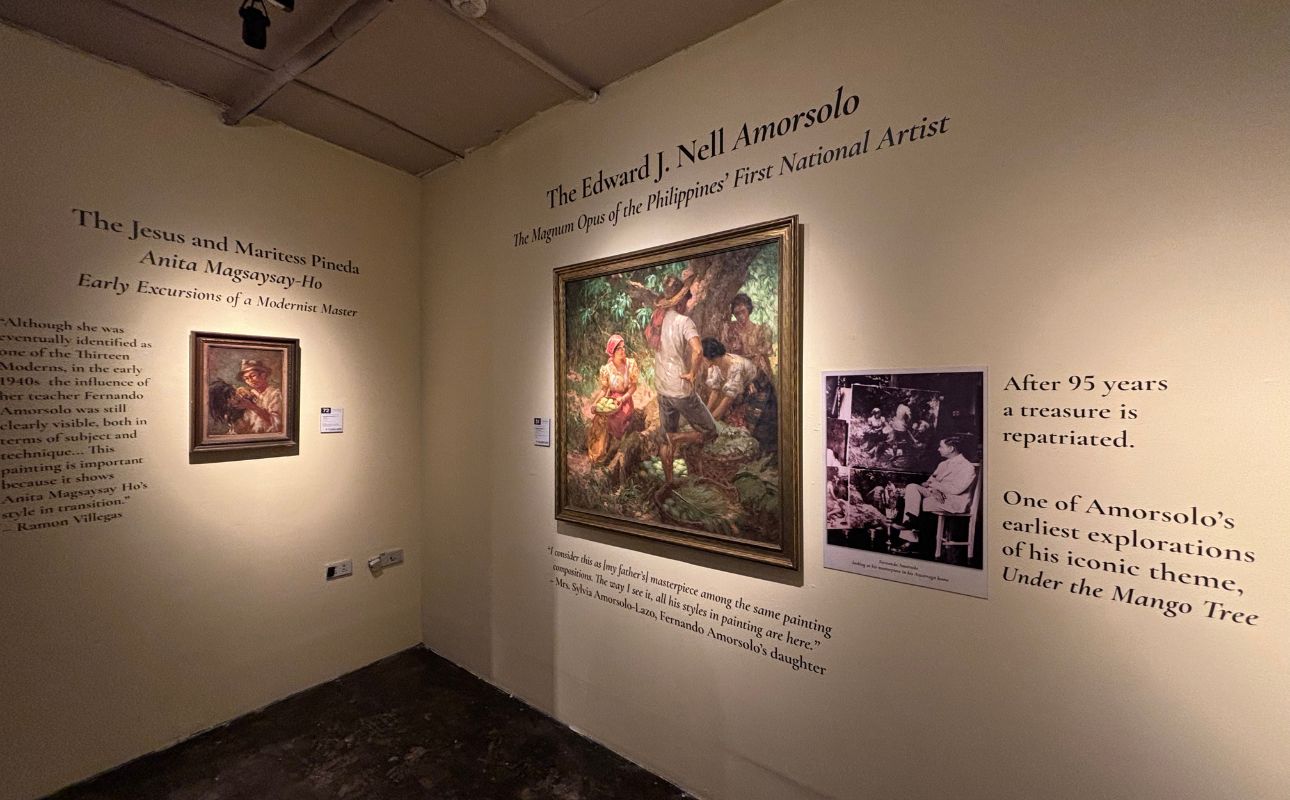Auctioning off historically relevant items such as a rare copy of the “birth certificate of the nation,” or Fernando Amorsolo’s magnus opus, sets an important precedent– a sharp reminder of the Filipino nation’s persistent beauty that makes it worth preserving.
After all, the cultivation of a nation’s identity is a collective endeavour that draws strength from the resolve of its cultural heritage. Being exposed to pieces of historical relevance, in turn, plays a vital role in triggering the task and deepening the nation’s appreciation for what has been.
“It becomes advantageous to all parties. And also for research. It becomes democratically available for everybody,” suggests León Gallery owner and director Jaime Ponce de Leon when asked of the importance of auction events and art exhibits.
The world-renowned León Gallery in Makati City, widely considered as the most trusted auction house in the Philippines today, has been home to some of the most influential art works and artifacts that are deemed central to the country’s ‘being.’
Case in point: it was the proud home of the P112 million record-breaker Space Transfiguration, an abstract painting by National Artist José Joya famous for being the most expensive Philipping art ever sold.
Just a week ago, León also auctioned off Under the Mango Tree – Fernando Amorsolo’s greatest work ever– in sensational fashion. At P56 million, it broke the record for the most expensive Amorsolo obra ever bidded, beating “Mango Gatherers” which was sold for P46,720,000 during a 2018 auction event also organized by León.
Also making the headlines was the sale of a rare copy of the Acta de la Proclamación De Independencia Del Pueblo Filipino, or the Declaration of Philippine Independence. At the same event, the “birth certificate of the nation” was sold for P11,415,200.
So, what is the significance of all this? Jaime Ponce de Leon thinks it’s all about the awareness that it brings.
“The good thing about putting an important document on auction is that it will inform everybody that there is this document available. We can also have the copy of this available for everyone–scanned copies,” he told GMA Regional TV News.
“By making it available, it becomes advantageous to all parties for research. It's democratically available for everybody. This piece gave us independence from 333 years of Spanish rule, it is the birth certificate of a new nation that became the Philippine republic,” he added.
He also commends the conscious effort to procure a second copy of the said document, all courtesy of a lieutenant colonel of the revolutionary government named Jose Bañuelo.
“During that time in 1898 when this proclamation of independence was made, we didn't have photocopies. It was necessary for (Jose) Bañuelo who was an aid to Emilio Aguinaldo to make sure that a copy existed just in case the original one gets lost… It surprised a lot of historians because a lot did not know that this copy existed,” he explained.
COMMERCIAL AND CULTURAL RELEVANCE
Beyond the primordial relevance to nation-building, an item’s perceived value in the art scene, especially on the business side of things, is also worth discussing.
Mateo Nuguid Leoncio, an arts manager by profession and an aficionado raised in the art world, believes that exhibits like Leon Gallery’s “Magnificent September Auction” send a signalling effect for Filipinos to be more interested.
“The impact of this record breaking sale is that there will be more interest from the public to either sell or buy art,” said Leoncio in an interview with GMA RTV News, talking about Amorsolo’s Under The Mango Tree.
Credible galleries such as León, according to Mateo, serve as a dwelling place where socially relevant pieces can command the attention they deserve, that’s why it’s paramount that these institutions have a solid track record.
“Commercially, León (Gallery) has made the collection of Filipino art grow due to the increasing prices every auction. Then it translates to the next significance to the art industry– cultural significance,” he said.
A prime example of this is the resulting precedent after the sale of Under the Mango Tree, a move that will “give more value by the buck to every artwork by Amorsolo” and will in turn shed more light on works by Filipino artists.
“From 2018 to 2024… you will see an exponential growth in its prices. You can already say that collectors are putting more value in collecting Amorsolo’s paintings over foreign masters. In fact, Filipino collectors are more keen in collecting paintings by Filipino artists than any other master outside the Philippines,” he explained.
Part and parcel of making these pieces commercially relevant is the documentation process that enforces the value of remembering the social milieu when the paintings came to life.
“If you look closely at the painting, Fernando Amorsolo has highlighted the beauty of a Filipina, the cultural setting during their time. He captured the hue of sunlight. His techniques are very distinct and fine which I think adds value to its price, as aesthetics adds a relevant impact to buyers,” explains Mateo.



